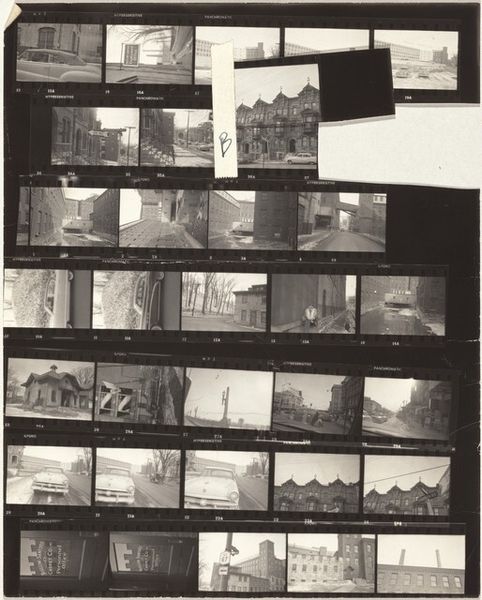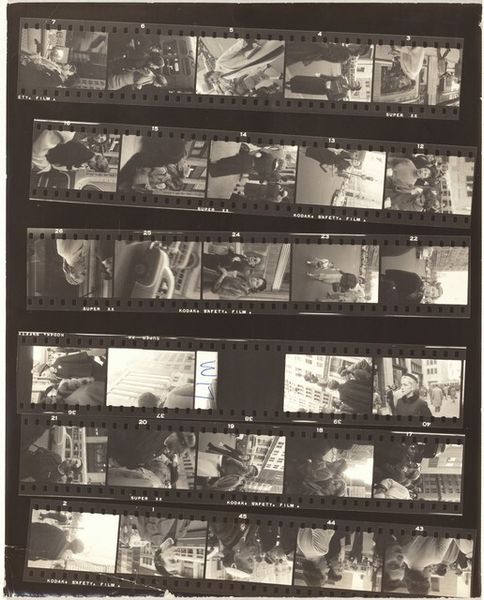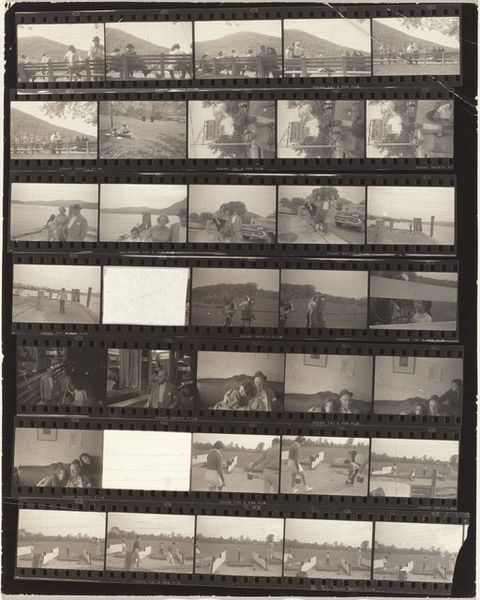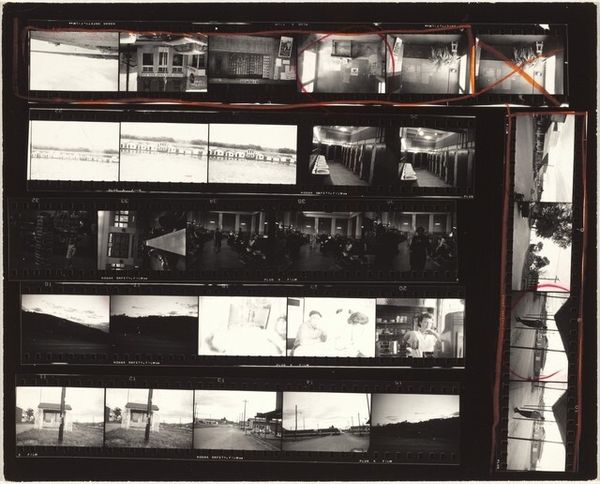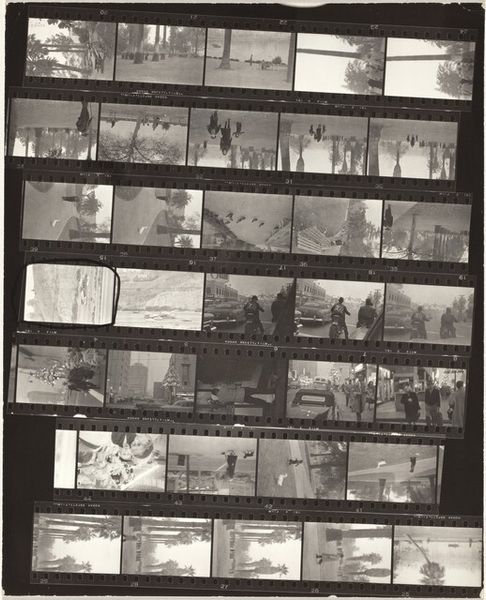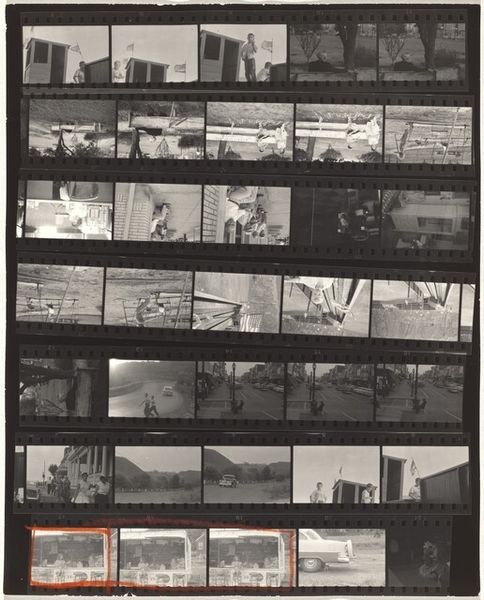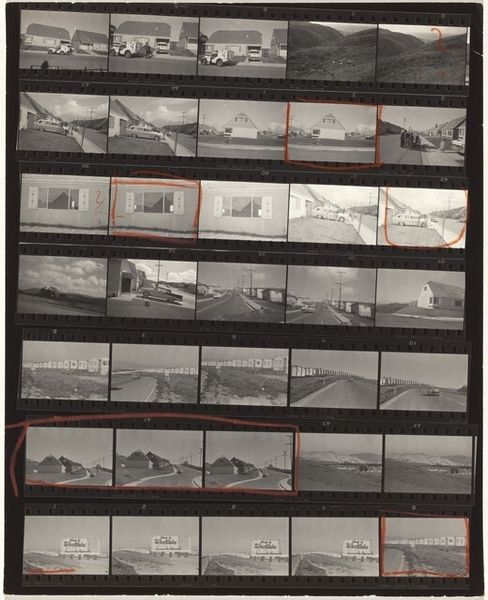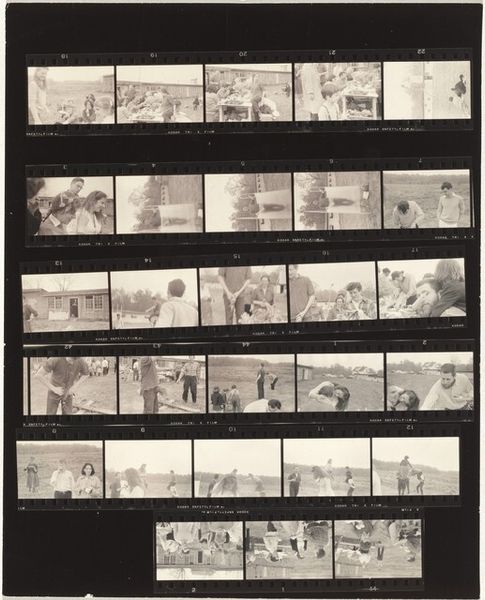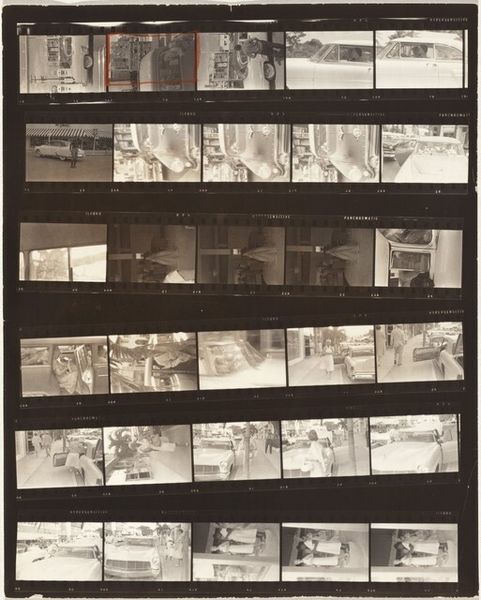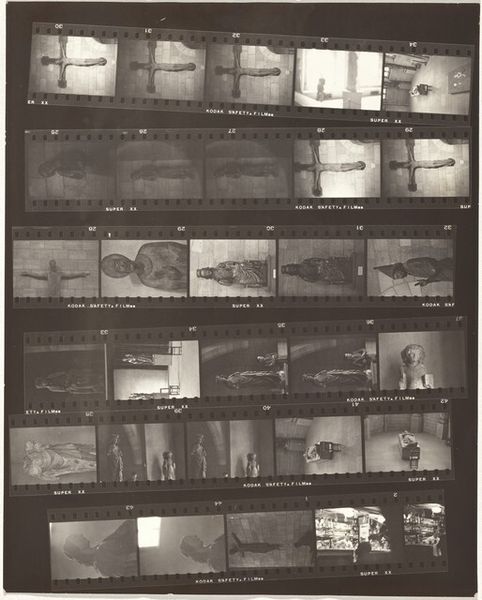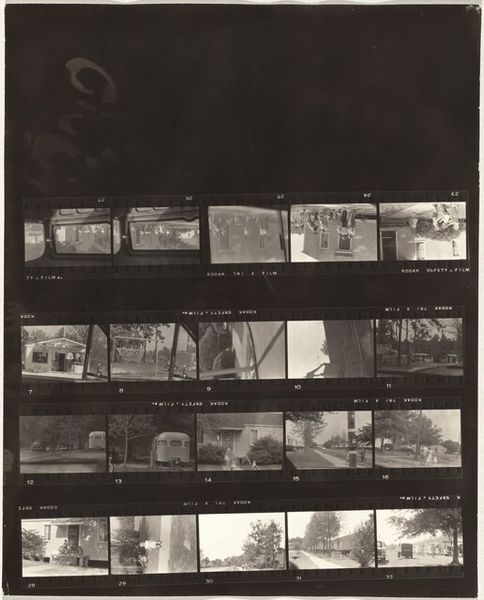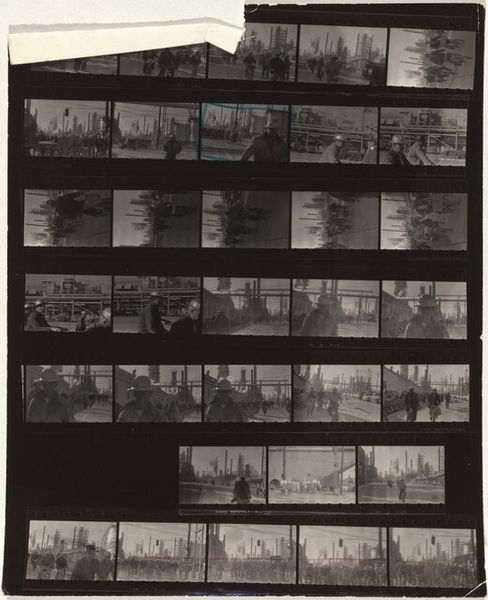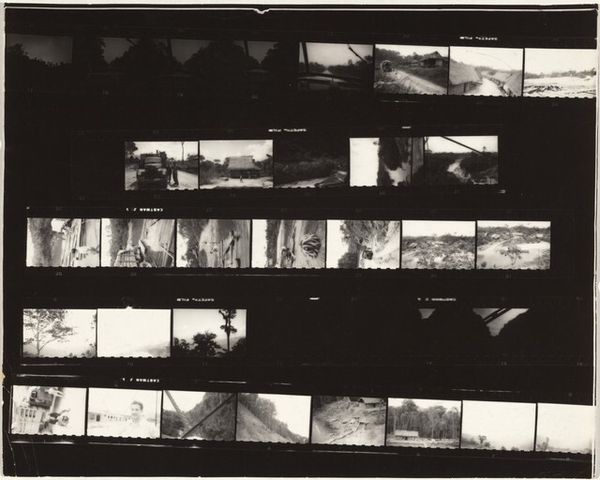
photography, gelatin-silver-print
#
abstract-expressionism
#
film photography
#
landscape
#
street-photography
#
photography
#
gelatin-silver-print
#
monochrome photography
#
cityscape
#
film
#
realism
#
monochrome
Dimensions: overall: 25.3 x 20.2 cm (9 15/16 x 7 15/16 in.)
Copyright: National Gallery of Art: CC0 1.0
Editor: Robert Frank’s "New York City 5," a gelatin-silver print made between 1957 and 1958… It’s quite different than a single shot, isn't it? A full contact sheet actually. The mundane, like the inside of a car, is placed right next to potential monuments and blurs of city life. How would you unpack that decision? Curator: From a materialist perspective, the contact sheet itself speaks volumes about the photographic process. It lays bare the artist’s labor, the act of selection and rejection inherent in creating a final image. Notice the DuPont safety markings? Frank is using readily available, mass-produced materials. Editor: Right, like these aren’t staged or heavily processed. So what does presenting the *unselected* say about his views on, well, art itself? Curator: Consider the social context of the late 1950s. Mass production, consumer culture – these were defining features of American life. Frank is showing us the raw material of that life, refusing to idealize it through careful cropping or darkroom manipulation. He is embracing the imperfections, the sheer volume, even the "waste" of the photographic process. Editor: It’s interesting that he's focusing on both monuments and cars. The monuments and boats would be the city's public infrastructure while the car and the apartment windows seem almost deliberately…private? Curator: Exactly. He's flattening that distinction. He sees them equally valuable to capturing the reality of life at the time, presenting a view of consumerism. Think about what that means – making no judgments here, just presenting evidence. Editor: I see. So instead of a curated narrative, he is laying bare the mechanisms of seeing and making meaning. That definitely reframes how I look at photography and the artist's role. Thanks! Curator: My pleasure. It encourages us to consider art beyond aesthetics and into a product of larger consumption structures.
Comments
No comments
Be the first to comment and join the conversation on the ultimate creative platform.
